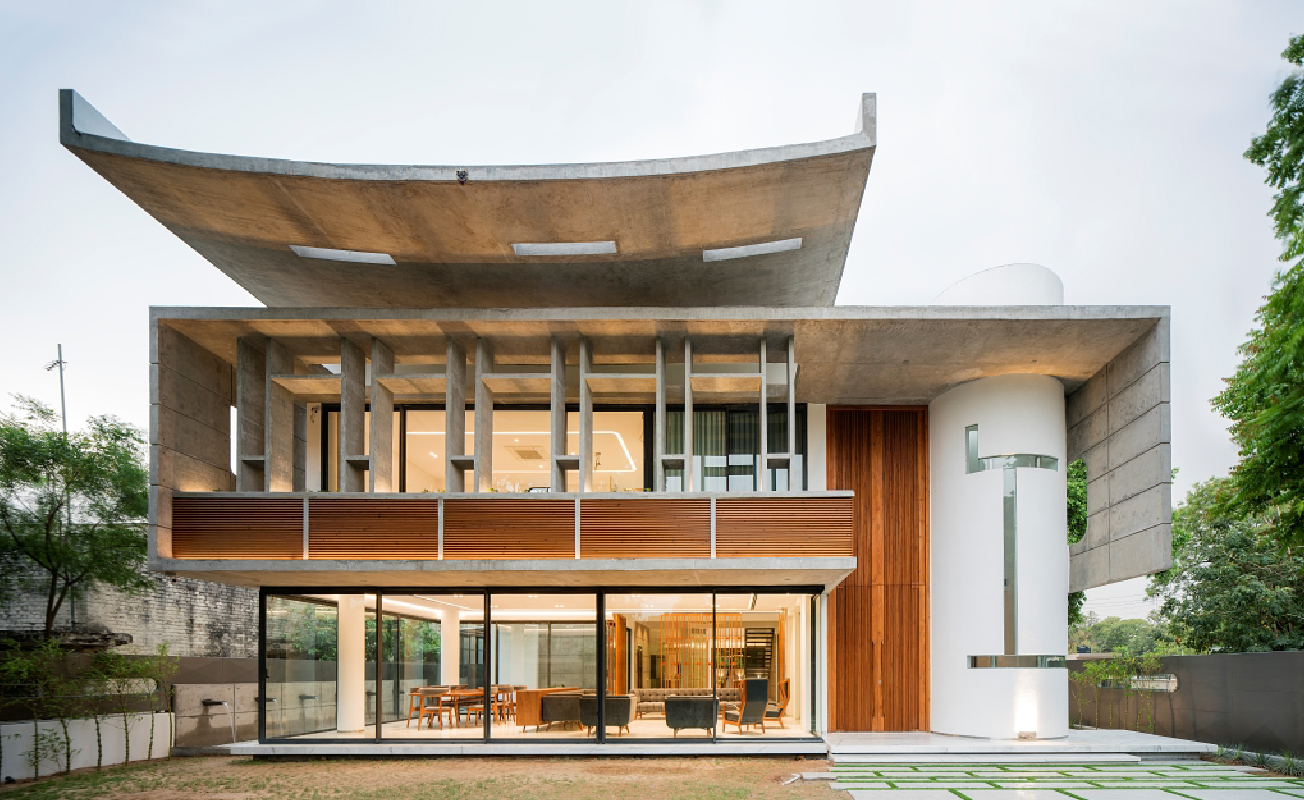The monumentality of the institutional structures in Le Corbusier ’s Chandigarh constitutes one of the defining characteristics of this ‘Modernist heritage’. The materiality of exposed concrete contrasted by the modern colours and the movement - guiding freely flowing spaces of the open - plan ideology contribute to building this legacy' s character
However, for a multigenerational home concerning a family of six, capturing this timelessness falls secondary to the matters of individual privacy in a shared residence with interconnected spaces. For Residence 1065, the primary inspiration came from the Congrès Internationaux d'Architecture Moderne, or the CIAM — aligning well with the location of its plot that sits in Chandigarh’s Sector 27. One of the operating principles of CIAM for an ideal city model was to compartmentalise the zones of l eisure, luxury living and work. A heavy emphasis was also placed on the abundance of light and spaces that are intermediated with expansive green areas. Translation of these characteristics for the design of a residence would require more than a mere scale - down of these modernist monuments — an interpreted learning of how the defining elements interact. Elements like the open floor plan, a limited colour palette, the use of shading fins, the character of the staircase and the idea of functionality are at the core of every design decision.

Using an open plan and facades that appear to float, the home attempts to fuse traditional spatial planning with modern aesthetics, while maintaining an optimum amount of daylight ingress. The house greets visitors with i ts sweeping, curved concrete roof. At a more eye - friendly elevation, a glass - encased, open ground - floor plan comes into view. The resultant open plan overlaps several interconnected volumes and outdoor spaces that allow for easy interaction between separat e floors, complying with the highly cohesive lifestyles prevalent in multi - generational Indian families. Nature becomes a part of the interior spaces through multiple courtyards and terrace gardens — staying true to the idea of interpreting traditional, tran sitional spaces like verandahs in a modern context. As they open onto courtyards and deep verandahs with tall sun breakers on the front facade, they grant access to the outdoors while not compromising on the element of privacy.
The design for the home is driven by intersecting axes; the major axis anchors the central circulation while the minor axis connects the landscaped courtyards . The overlapping volumes facilitate the residents’ movement along these two axes in a way that the spaces unfold in layers as one progresses from the public to the private areas. The common areas are enclosed in expansive glazing, in direct dialogue with the open spaces around them. The kitchen occupies the centre of the floor plan, with a collapsible partition delineating it from a courtyard.

Residence 1065 discusses the expression of modernism against the backdrop of cookie - cutter urban infrastructure. Applying the learnings from traditional space planning concepts allows the underlay of rigidity — a characteristic of monum ental public architecture of the city — to become a restful abode. This, supplemented by a multilayered interpretation of Corbusian philosophies, positions Residence 1065 beyond the simplistic symbolism of modernist Chandigarh.